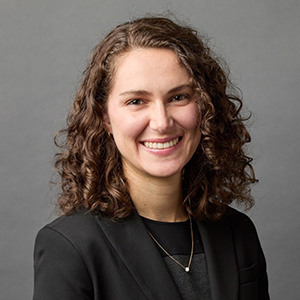Quality Improvement and Patient Safety For FITs Part 2

In part 1 of this series, I made the case for why it is important for FITs to learn and practice the fundamentals of quality improvement (QI) and patient safety (PS). Applying skills in practice-based improvement is an opportunity to grow as leaders and contribute to a culture of safety. But what would be a practical approach to embed a longitudinal QI and PS curriculum within cardiovascular training?
Motivation to Change
Since the early 20th century, Morbidity and Mortality Conferences (MMCs) have been the standard forums to discuss and learn from adverse events or near misses.1 The cardiology fellows at my institution were required to present MMCs annually. The goals of such conferences are to approach clinical problems using a systems-based framework in a psychologically safe environment, with an eye toward actionable solutions.
However, while the conferences offer opportunities to learn from complex clinical cases, they often fail to involve fellows in systems-based solutions.
There were two major motivations to change our approach to MMC. First, we noticed that sentinel or sub-sentinel events presented at MMC were quite rare (thankfully!). When they did occur, they typically required comprehensive evaluations beyond the scope of cardiology fellows. Because of this, after presenting at conferences, fellows were rarely involved in the solutions to make sure similar events did not recur.
Second, fellows did not have a forum to discuss many of the micro quality and safety issues that they saw every day. Where could they tactfully address the inefficient cardiology consult triage system? When would they have the time to figure out why transesophageal echoes were always ordered incorrectly? These are the types of problems fellows face. Wouldn't it be great if, instead of venting about these pain points to their co-fellows, they could systematically address these issues and make meaningful change?
The implementation of the change was simple: rebrand our MMC. Fellows now present at "Cardiovascular Quality and Safety Grand Rounds," where we apply QI and PS tools to approach the problems that affect us all. The audience – the cardiovascular division – pushes fellows to take a comprehensive approach to thinking about their problem. Categorizing the forum as grand rounds elevates these problems to the mainstage and provides both insightful feedback and stakeholder buy-in. We found that reframing our conference provides not just the time and space for introspection on how we deliver care but also empowers fellows to turn their QI projects into actionable solutions.
Setting Fellows Up For Success

Of course, to provide fellows with the tools they need to investigate everyday problems, we need to teach them the nuances of QI methodology. We are now in the fifth year of our Quality and Safety didactic curriculum, designed specifically for cardiology fellows. The goal of our curriculum is threefold:
- Arm fellows with tools to design and implement evidence-based QI projects and/or critically analyze system-based patient safety problems.
- Provide a platform for fellows to advocate for issues important to them and their patients.
- Build upon skillsets in teamwork, quality and safety that fellows will use for future practice.
To achieve these goals, we have developed a five-part didactic series embedded within our cardiovascular noon conference (Figure 1). Each hour-long session is designed for the adult learner, crafted to give examples of QI and safety tools local to our institution, and targeted to provide practical tools for fellows.
In true QI fashion, the curriculum continues to undergo changes based on fellow feedback. I learned that fellows have a hard time accessing data for past QI projects, so I added a session led by a cardiology informatics expert on how to gather data using the electronic health record and our data analytics center when more support is needed. Moving forward, I plan to weave in the value of QI in addressing health care inequities, particularly in the socioeconomic disparities we see in cardiovascular care.
Spreading Change

Our motivations to reframe our MMC are not unique,2 and perhaps they resonate with you as well. "Quality and Safety Grand Rounds" have been a fun, informative and exciting way to create lasting impact at our institution (Figure 2). If you are interested in learning more about our curriculum, I am happy to chat! As always, there are plenty of ways to get involved with ACC Quality and Safety, including the chance to submit your abstract for the ACC Quality Summit.
The ACC Quality Summit, a live-format conference, provides a platform for you to present your abstract, connect with health care quality experts, share insights and engage in discussion with peers and mentors on advancing quality care in cardiology. Abstract submissions are currently open. Learn more about submitting an abstract for ACC Quality Summit here. Abstracts are due Monday, June 24.
References:
- Orlander JD et al. The Morbidity and Mortality Conference: The Delicate Nature of Learning from Error. Acad. Med. 2002;77:1001–1006.
- Brook K, Agarwala AV, Tewfik GL. Reframing the Morbidity and Mortality Conference: The Impact of a Just Culture. J Patient Saf. 2024 Jun 1;20(4):280-287. doi: 10.1097/PTS.0000000000001224.

This article was authored by Jadry Gruen, MD, a chief cardiology fellow at the University of Pennsylvania in Philadelphia, PA, and a master’s candidate in Health Policy Research with a Concentration in Quality and Safety.
This content was developed independently from the content developed for ACC.org. This content was not reviewed by the American College of Cardiology (ACC) for medical accuracy and the content is provided on an "as is" basis. Inclusion on ACC.org does not constitute a guarantee or endorsement by the ACC and ACC makes no warranty that the content is accurate, complete or error-free. The content is not a substitute for personalized medical advice and is not intended to be used as the sole basis for making individualized medical or health-related decisions. Statements or opinions expressed in this content reflect the views of the authors and do not reflect the official policy of ACC.
